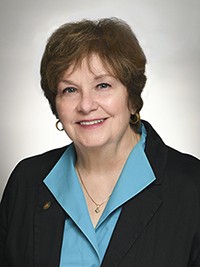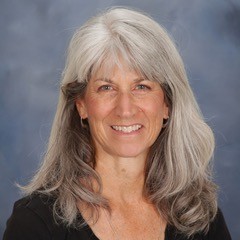Las juntas escolares tienen un trabajo más difícil que nunca

Steady hand, thick skin required
Who has had the toughest job as an elected official this year? Your senator? Your congressman? Your state treasurer? Let’s see:
- Who held meetings with hundreds of people arguing over critical race theory?
- Who had to shut down board meetings because unmasked parents vented over masks in schools?
- Who had to decide on safe school reopening knowing that whatever the timeline some people will be really angry?
Your local school board member, that’s who. The school board has become the focal point for community angst and frustration in many communities, boiling to the point of an unprecedented number of recall elections.
It is indeed a year like no other. Schools must address the fallout of the pandemic and the needs not only of students but also of parents, who are beyond frustrated.
Serving on a school board takes patience, tact and sometimes skin thick as a rhinoceros. It takes a strong commitment to public education and the ability to ask the right questions during uncertain times. It’s a vitally important form of service that our communities cannot live without.
The pandemic revealed critical gaps in school services, and the task of addressing those gaps fell substantially on school boards, as the California School Boards Association has worked to explain with examples. Students from low income families frequently struggled to access distance learning:
Many students, isolated and grieving, needed mental health support. Again, finding ways to address these needs fell to school boards.
Two school board members share their stories
The pandemic did not come with an instruction manual. School board members and administrators had to do the best they could with incomplete information as state and federal direction changed with the conditions. We asked two veteran school board members to share their experiences about decision-making in the pandemic. We intentionally focused on two districts that took very different approaches.
Kathy’s Experience in Orange Unified

Kathy Moffat
Kathy Moffat serves as president of the school board in the Orange Unified School District, one of the few districts that maintained in-classroom instruction during the 2020-21 school year.
“The Coronavirus pandemic hit our local schools with a wallop on my grandson’s birthday, March 13, 2020,” said Kathy. “He had the chance to be the ‘Beary Special Person’ in his Kindergarten class that day. It turned out to be the last in-person school day of the school year.”
The greatest challenge ever as a school board member.
Kathy has served on the school board for more than twenty years. “This was the most difficult experience in all that time,” she said. “27,000 students and their families were relying on us. There were more challenges than we as a school board could even envision, but fortunately for us, our superintendent’s head was already in the game. She asked us to work together as a team, and that is what we did.”
Operating schools during the Pandemic has been a massively complex undertaking in every school district, with complicated and sometimes conflicting guidance from federal to state to local input. Districts and boards developed safety plans to coordinate it all. How much new work was it? Take a peek at the massive Orange Unified School District school safety plan for an example.
The Orange Unified Superintendent’s welcome message for this school year summarizes some of the issues and policies the school board worked on:
Kathy emphasized how important it was to have an agreement with school unions early in the process. “Our relationships with our employees were healthy and mutually respectful,” she said. “That was absolutely crucial in this crisis.”
Distance learning
At the beginning of the pandemic, school districts had to dig into reserves to find money for needed services. Like many districts, Orange Unified accessed reserve funds and purchased digital devices for students who didn’t have them and set up distribution methods to get them into their hands.
According to Kathy, “To the credit of our superintendent and her leadership team, and really our entire staff, our district began teaching via computer the very next Monday. The students stayed at home, but our schools didn’t spend one day shut down.”
“Teachers kept working hard to stay ahead of their students in developing online lessons, but they were exhausted by the reality of teaching half of their class in person and simultaneously teaching the other half on their computers at home.”
Food services
Many low-income families rely on schools to feed children so that they can focus on learning. Districts developed strategies to provide meals during the Pandemic. Orange Unified was no exception. “Our classified employees continued food service and implemented district-devised methods of getting meals to students who needed them,” she said.
Health and safety concerns
Schools had to provide extensive — and expensive — protective measures. Staff, quite naturally, had concerns about their own health and safety as well as the safety of students. “As a board we kept our focus on staying open because we knew that was the best thing for our kids, but we also knew that ‘dual teaching’ was not sustainable over the long run,” Kathy recalls. “Our expectations were so very high, and at the same time, we wanted to protect our staff whom we value so highly, to whom we are so indebted, and whom we had placed in such a difficult situation. This was a big worry.”
Vaccination Centers
The arrival of vaccines brought a huge sense of relief, and an opportunity for schools to serve their community in a new way. “Our staff wanted the protection of vaccination,” said Kathy. “Led by our superintendent, our school district became a vaccination site, and also a Covid testing site to make those protections more accessible to our employees.”
Rachel’s Experience in San Ramon
Major decisions in Orange Unified were difficult, and involved lots of community input with vigorous discussion and strong opposing views. But they were accomplished with what, in retrospect, amounted to regular order.

Rachel Hurd
In San Ramon, by contrast, policies were met with anger from some segments of the community. “It was a roller coaster ride,” said Rachel Hurd, a past president and a long-time member of the board of San Ramon Valley Unified School District (SRVUSD).
About the same number of students attend schools in each of these two districts, but they have very different demographics. Nearly half of students in Orange Unified are eligible for free and reduced lunch. In San Ramon less than one in ten is eligible.
Recall petitions, motivated by community disagreement over the timeline for reopening schools for in-person instruction, were circulated for three board members in SRVUSD. In addition, San Ramon Valley hired a new superintendent in August 2020.
Rachel is a strong storyteller. Here, she shares how controversies evolved:
“The district had just finished all-night negotiations with our teachers union when emails started arriving from parents concerned about the coronavirus. Our schools closed the same day the statewide ‘shelter in place’ was announced, two weeks before spring break. We asked students, parents and staff to prioritize taking care of themselves and their families.
“To relieve stress, teachers initially were asked to hold off on introducing new material. In the same spirit, grading for the second semester was changed to Pass/No Pass. Some parents felt that this students were being penalized and asked the board to make Pass/No Pass optional, but we did not because of equity concerns.
“We held a five hour Zoom board meeting in mid-July. Some parents were adamant that school had to be in person; others were adamant that in-person was unsafe. Most agreed that the remote learning experience in the spring was inadequate. We voted for a hybrid option, with students attending in-person two days a week. I immediately felt like we’d voted for an option that would make no one happy.
“Since remote instruction was a key part of a successful hybrid approach, we had to give our teachers better tools and training for it. After more deliberation, we decided to open ‘remote only’ with a commitment to revisit how to implement a hybrid choice after demonstrating what quality remote instruction looks like. I felt confident that this was the right decision, even though we took heat for it.
Politics and disagreements
“As the weeks and months played out, it was clear that our community was extremely divided. In the fall, the board voted to offer families a choice between staying remote or starting the second semester in a hybrid model. We knew that there wasn’t a ‘one size fits all’ solution. There were many different views of what was safe, what was effective education, and the role of relationships.
“The details associated with opening schools for hybrid in-person instruction, with guidance from the Governor and county health agencies, were complex. Meanwhile, by Thanksgiving, our Covid case rates had quadrupled. By the time of our December 15th meeting, they had quadrupled again. Because of the growing COVID numbers there were questions about whether the district was allowed to reopen.
Reopening dates change. Parents seek recall
“In December, on our superintendent’s recommendation, our board decided to delay the reopening of in-person instruction until allowed under the terms of the return to school COVID-19 case dashboard. Although I knew this would disappoint some of the community (about 30% of students had chosen hybrid learning), I felt it was necessary for the health and safety of all. From that point on, our superintendent and the board adopted a guiding principle: we would follow the health department guidance — not more and not less.
“The board decision was unanimous, but some in the community were infuriated. They called our superintendent a liar. They accused the teachers union of ill will. They accused us of violating the Brown Act, claiming that we had not properly noticed the December meeting. It’s pretty easy to start a petition to recall an elected official in California, and by the end of January, three of us were served with notices of intent to recall.
“It hurt to have my integrity publicly challenged.”
“On one level I was angry — angry for the disruption and the lack of appreciation about the complexity of all the competing perspectives and imperatives. On another level I was hurt. After 14 years of service, dedicated to children and helping parents make school work for each child, it stung to have my integrity publicly challenged.
Schools open as promised
“True to our word, we opened in-person instruction for the families that chose hybrid instruction as soon as the dashboard allowed — grades TK-6 in mid-February and grades 7-12th in mid-March. By holding to our commitments, the recall never really got momentum, and signatures were not submitted by the May 27th deadline. With much of our community vaccinated and preparing for most students to be in-person in August, it felt like as a community, we’d turned the corner.
Clash over masks: board meeting shuts down
“However, as the Delta variant surged in July, breakthrough infections led to more shifts. Some parents, increasingly concerned about the physical health of their children, asked to move their students to the district’s Virtual Academy. Other parents, concerned about the social well-being of their children, were advocating for masks to be made optional in school.
“In early August, opponents of masking were planning a rally for our first board meeting. The county announced a new mask mandate requiring masks for everyone in indoor public spaces effective the day of our board meeting. The board returned from closed session to a room full of people who had entered the building unmasked. A few were holding flags on flagpoles that they kept pounding on the floor. One mother went to the microphone defiantly wearing a cloth party lei that she’d taken from the lobby decorations, wrapped around her face in lieu of a mask.
“The police arrived to support order. The meeting was live-streamed and also received TV news coverage. I fear that this display made the more cautious members of our community even more afraid, and requests continue to come in for placements in the virtual school.
“Our schools opened on August 10th, and staff continues to jump through hoops to accommodate these placement change requests and navigate the confusing new guidance about modified quarantine.
“We have learned so much about the virus that hopefully will prevent us from having to close schools again. The pandemic illustrated that communities rely on schools not only to educate children but also to provide supervision, care, and food for them during the day while many parents and caregivers work.
“I think the pandemic also showed us that even though local control is a concept we Californians hold dear, issues that affect people beyond the borders of a jurisdiction require regional and statewide coordination and direction.”
Epilogue: The hot seat
There are over 1,000 school districts in California. Each school board member has a story. As the 2021-22 school year proceeds, school districts anticipate continuing confrontations over whether to require masks or not. These confrontations are fuelled at times by groups outside the school community.
We hope these two stories provide insight into the challenges school boards are facing during this pandemic. Parents have strong opinions on what is best for their children. School boards have to make tough decisions in a rapidly changing environment.
They are on the hot seat.
Etiquetas de esta publicación
Consejo escolar PandemiaTodas las etiquetas
Academia Khan Acoso acreditación Actitud Administradores Agallas Álgebra Ambiente escolar Aprendizaje Aprendizaje Ampliado Aprendizaje basado en proyectos Aprendizaje socioemocional Artes Asistencia Asociación de Maestros de California Asociación de Padres y Maestros Atención plena Ausencias Bonos de obligación Brecha de desempeño Burbank Calidad Calificación de escuelas Calificaciones en pruebas Cambio Canción Carol Dweck Carrera Cerebro Certificación CHAMP Ciencia Cierre de escuelas Civismo Comparaciones nacionales Concurso Consejeros Consejo escolar Control local Costo de educación Creatividad Crecimiento económico Crucigrama CSBA Currículo común cursos de estudios étnicos Datos Después de clases Día de la Independencia Diálogo dislexia Distritos Diversidad Dotado DREAM Act EACH EdPrezi EdSource EdTech Educación bilingue Educación del carácter Educación especial Educación religiosa Educación sexual Educación universal Elección Elección de escuela Enlaces guía Equidad Escasez de maestros Escuelas católicas Escuelas chárter Escuelas comunitarias Escuelas en casa Escuelas Magnet Escuelas privadas Escuelas religiosas Esfuerzo Estándares Estudiantes en riesgo Estudiantes que están aprendiendo inglés estudiantes sin hogar Estudios étnicos Evaluación Evaluación nacional de progreso educativo Éxito Federal Filantropía Financiamiento Financiamiento local Fondos por categorías Fundaciones educativas Ganadores Gastos Gobierno local Gráfica Grupos de presión Guía para padres líderes Historia Horas de oportunidad Huelga Humanidades Impuestos a la propiedad Impuestos prediales Índice de desempeño académico Indignación Indocumentado Infraestructura Iniciativas Instalaciones Internacional Investigación Jerga Kindergarten La Ley Brown LCFF Lectura Ley Cada Estudiante Triunfa Ley Que Ningún Niño Se Quede Atrás Liderazgo Límites de distritos Litigación Lotería Maestros mantequilla de cacahuate Mapa Mapa del sitio Marcador Matemáticas Medios de comunicación Mejoramiento Continua Mito Mitos Motivación estudiantil Negociación colectiva Negocio Niñez temprana Noticias falsas Nutrición Organizaciones de gestión para escuelas chárter Padres Pandemia Participación de los padres Pedagogía Pensiones personalizado PISA Plan de responsabilidad de control local Planificación Plantilla Población Pobreza Política Política federal Políticas Premio Prescolar Presupuestos Prezi Proposición 13 Proposición 98 Propósito de la educación Pruebas Reclutamiento de maestros Reforma Requisitos ag Responsabilidad Resumen del año Retención de maestros Rigor rompecabezas Rúbrica de evaluación Salario de maestros Salud Salud mental Se necesita ayuda Serrano vs Priest Sindicatos Sorteo SPSA STRS Sueño Suicidio Superintendente Suspensiones Tablero Talento Tamaño de clases Tareas escolares Tasas de graduación Tecnología Tecnología en la educación Tiempo dedicado a la tarea Tiempo en la escuela Trump Universidad Vacunación Vales Valores Vapeando Verano Vídeo Voluntariado Voluntarios Voto Voz del estudiante¡Compartir es vivir!
Restablecer contraseña
Buscar aquí en el contenido del blog y todas las lecciones.
Iniciar sesión con correo electrónico
We will send your Login Link to your email
address. Click on the link and you will be
logged into Ed100. No more passwords to
remember!














Preguntas y comentarios
Para comentar o responder, por favor inicie sesión .